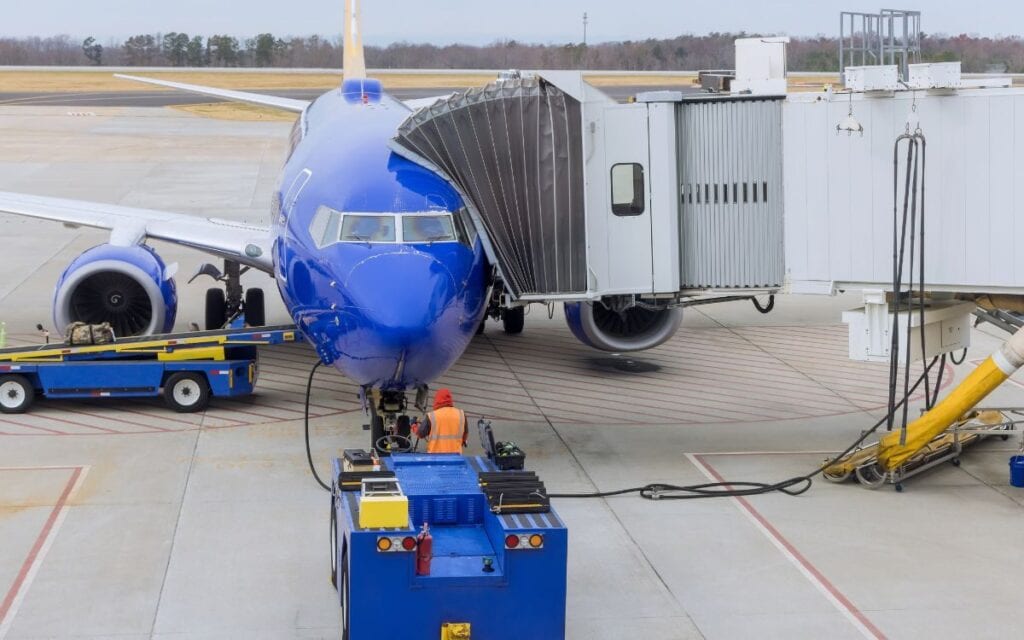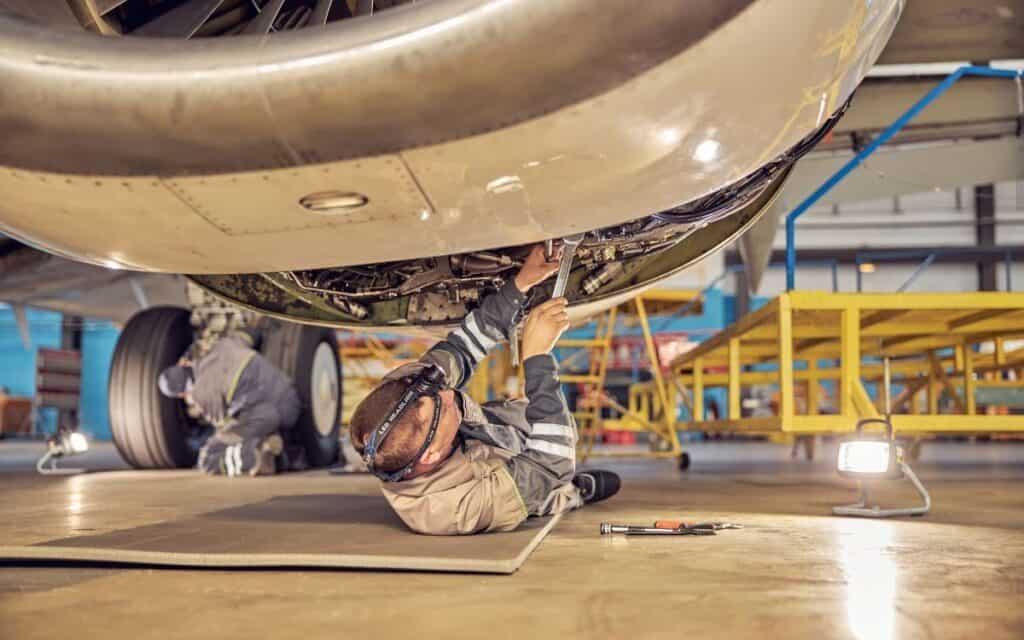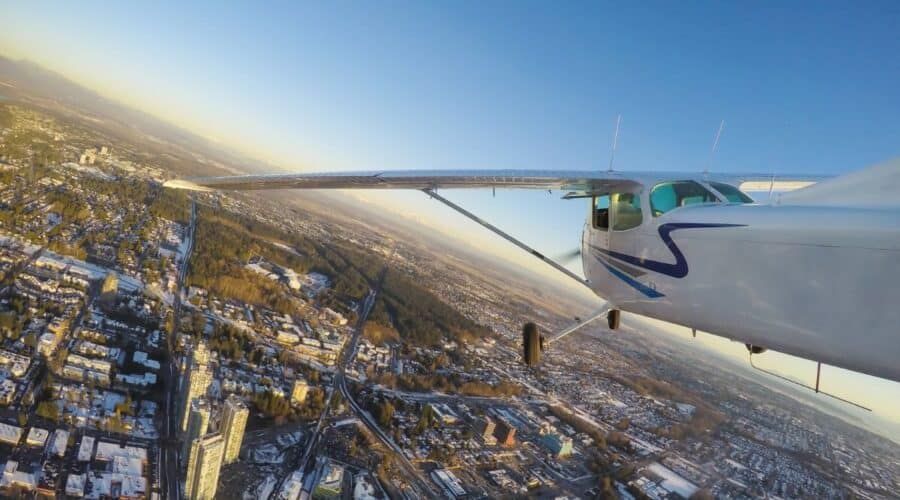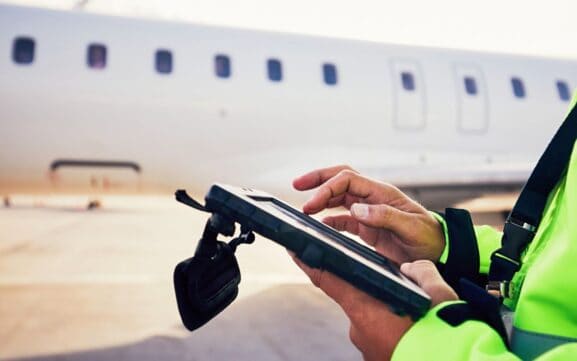Winglets vs Sharklets: The Aerodynamic Evolution Revolutionizing Aircraft Fuel Efficiency
Published by The Flying Engineer – Your Premier Aviation Industry Network
Introduction
The aviation industry’s relentless pursuit of fuel efficiency has produced few innovations as visually distinctive and operationally significant as winglets and sharklets. These vertical wingtip extensions, inspired by nature’s own aerodynamic solutions, represent a fundamental shift in aircraft design philosophy—transforming wasted energy into measurable operational benefits worth hundreds of millions of dollars annually across global airline fleets.
When Airbus’s venerable test A320 (MSN0001)—the world’s first A320—took flight on November 30, 2011, equipped with revolutionary “Sharklets,” it marked a pivotal moment in commercial aviation’s efficiency evolution. This flight initiated an elaborate certification program that would ultimately deliver fuel savings exceeding 3.5% on long-range sectors, fundamentally altering the competitive landscape between Airbus and Boeing.
The winglet story encompasses decades of aerodynamic research, patent battles, operational economics, and the continuous drive to extract maximum efficiency from every gallon of jet fuel. Understanding this evolution provides crucial insights into modern aircraft design principles, competitive manufacturer strategies, and the economic forces shaping today’s aviation industry.
These distinctions aren’t just technical, they’re also marketing tools. Both companies create logos and brand elements that visually communicate their technological edge, reinforcing innovation in the minds of airlines and stakeholders. Boeing highlights blended winglet maturity and proven operational experience, while Airbus promotes Sharklet integration with next-generation A320neo programs and advanced composite manufacturing.
The Science Behind Wingtip Aerodynamic Evolution
Induced Drag and Wingtip Vortices
Aircraft wings generate lift through differential air pressure—higher pressure below the wing surface and lower pressure above. This pressure differential creates lateral airflow that moves outward from the fuselage toward wingtips, where it “spills over” to form rotating vortices that trail behind the aircraft.
These wingtip vortices represent pure wasted energy, creating what aerodynamicists term “induced drag”—a parasitic force that reduces overall wing efficiency and requires additional thrust to overcome. According to NASA’s Aerodynamics Index, induced drag can account for 40-50% of total aircraft drag during cruise conditions, making its reduction a primary target for efficiency improvements.
Wingtip Vortex Characteristics:
- Formation Mechanism: Pressure differential spillover at wingtips
- Energy Loss: Rotational kinetic energy extracted from forward motion
- Operational Impact: Increased fuel consumption and reduced range
- Wake Turbulence: Safety hazard for following aircraft
- Seasonal Variation: More pronounced in cold, dense air conditions
Nature’s Aerodynamic Solutions
The inspiration for winglet design emerged from careful observation of soaring birds, particularly large species like eagles and albatrosses that curl their wingtip feathers upward during high-lift maneuvers. This natural adaptation reduces wingtip vortex formation while maximizing lift efficiency—principles that translate directly to aircraft design.
Biomimicry research published in the Journal of the Royal Society Interface demonstrates how bird wingtip feathers create multiple smaller vortices instead of single large ones, distributing energy more efficiently and reducing overall drag penalties.
Historical Development and Patent Evolution
NASA’s Pioneering Research
NASA engineer Richard Whitcomb, renowned for developing the supercritical airfoil used throughout modern commercial aviation, pioneered winglet technology during the 1970s in response to the 1973 oil crisis. NASA’s Aircraft Energy Efficiency (ACEE) program sought revolutionary approaches to aviation fuel conservation, with Whitcomb’s winglet design promising induced drag reductions of approximately 20%.
Initial NASA flight testing on a modified KC-135 aircraft demonstrated lift-to-drag ratio improvements of 6-9%, validating theoretical predictions and establishing winglets as viable commercial technology. However, structural weight penalties and manufacturing complexities delayed widespread adoption for nearly two decades.
Commercial Aviation Breakthrough
The Boeing 747-400’s 1988 introduction marked winglets’ commercial aviation debut, featuring conventional angular designs similar to Whitcomb’s original concept. These early winglets achieved measurable fuel savings while establishing the structural and certification precedents for subsequent designs.
Winglet Evolution Timeline:
- 1970s: NASA develops basic winglet theory and testing
- 1988: Boeing 747-400 introduces commercial winglets
- 1993: Dr. Louis Gratzer patents blended winglet technology
- 2000: Dr. Fort Felker patents elliptical winglet designs
- 2006: Airbus initiates comprehensive A320 winglet testing
- 2011: Airbus Sharklets begin certification flight testing
Blended Winglet Innovation
Dr. Louis Gratzer’s 1993 patent for “blended winglets” represented a quantum leap in aerodynamic efficiency. Unlike conventional angular designs, blended winglets feature smooth transitions between wing and winglet surfaces, creating optimal airflow patterns that demonstrate 60% greater effectiveness than traditional designs.
Aviation Partners Inc., established in 1991 by Joe Clark and Dennis Washington, commercialized blended winglet technology beginning with Gulfstream II retrofit programs. The technology’s success attracted Boeing’s attention, leading to joint development programs that made blended winglets available across Boeing’s commercial aircraft family.
Elliptical Winglet Advancement
Dr. Fort Felker’s 2000 patent for elliptical winglets introduced sophisticated geometric optimization principles derived from computational fluid dynamics research. These designs approximate elliptical curves as they extend outward from wing intersections, ensuring optimal lift distribution both horizontally and vertically.
Winglet Technology LLC, founded by Robert Kiser and Dr. Felker in 2001, focused exclusively on elliptical designs that minimize induced drag through mathematical precision rather than empirical optimization.

Airbus A320 Sharklet Development Program
Competitive Pressure and Market Response
Boeing’s successful 737-800 winglet program, launched in 2000, created significant competitive pressure for Airbus. Flight testing demonstrated 4.7% fuel savings on 1,000-nautical-mile sectors—a substantial operational advantage that airlines quickly recognized and demanded from Airbus alternatives.
The timing proved critical as crude oil prices surged throughout the 2000s, making fuel efficiency the primary airline purchasing criterion. Airbus faced the strategic imperative of matching or exceeding Boeing’s winglet performance to maintain A320 family competitiveness.
European Union Research Initiative
The 2002 Aircraft Wing with Advanced Technology Operation (AWIATOR) program brought together 23 European manufacturers, universities, and research institutes in a €80 million, four-year technology development initiative. Airbus contributed 60% of the budget, focusing on drag reduction, noise mitigation, and fuel consumption improvements.
AWIATOR testing included very large wingtip devices on an Airbus A340-300, with resin film-infused composite winglets demonstrating advanced manufacturing techniques and aerodynamic principles that would influence subsequent A320 development.
Comprehensive Testing and Design Evolution
Airbus conducted extensive winglet testing between 2006 and 2010, evaluating multiple design concepts on various aircraft configurations:
Testing Program Phases:
- 2006: AWIATOR-derived winglets on A320 MSN0001 and MSN2755
- 2006: Elliptical winglets from Winglet Technology LLC
- 2008: Aviation Partners Inc. blended winglets
- 2010: JetBlue partnership testing with modified blended designs
Initial results proved disappointing, with structural weight penalties largely offsetting aerodynamic gains. However, continued development and optimization eventually achieved the performance targets necessary for commercial viability.
Korean Air Partnership and Manufacturing
Airbus selected Korean Air Aerospace Division as the sole Sharklet supplier, leveraging the aerospace manufacturer’s composite expertise and production capacity. This partnership represented significant technology transfer and established Korean Air as a major supplier in the global aviation market.
The manufacturing arrangement provided Airbus with cost-effective production while giving Korean Air access to advanced aerospace technologies and guaranteed production volumes across the A320 program lifecycle.
Technical Design and Structural Considerations
Aerodynamic Optimization Principles
Airbus Sharklets incorporate sophisticated aerodynamic principles derived from decades of research and computational fluid dynamics analysis. The design features swept-back geometry with pointed tips that optimize airflow patterns while minimizing structural complexity and weight penalties.
Sharklet Design Features:
- Height: 2.5 meters for optimal vortex disruption
- Sweep Angle: Optimized for cruise Mach numbers
- Twist Distribution: Variable along winglet span
- Composite Construction: Carbon fiber for strength and weight efficiency
- Integration: Smooth blending with existing wing structure
Structural Modifications and Weight Management
Installing Sharklets requires comprehensive structural modifications to handle increased bending moments and torque loads. Of the A320’s 27 wing ribs per side, the 19 outboard ribs require strengthening to accommodate winglet loads during all flight phases.
Structural Enhancement Program:
- Outboard Rib Reinforcement: 19 ribs per wing strengthened
- Center Wing Box: Enhanced for A320 and A320neo configurations
- Rib 27 Redesign: Dual compatibility for Sharklets or wingtip fences
- Weight Neutralization: 200kg airframe-wide weight reduction program
- Future Compatibility: Provisions for A320neo engine loads
The weight neutralization program ensures that Sharklet-ready aircraft equipped with conventional wingtip fences maintain identical performance to pre-2012 A320s, providing operational flexibility without efficiency penalties.
Competitive Analysis: Boeing vs Airbus Winglet Technologies
Performance Comparison and Market Dynamics
Direct performance comparisons between Boeing 737-800 winglets and Airbus A320 Sharklets reveal remarkably similar efficiency improvements on comparable sectors. Both designs achieve approximately 300kg fuel savings per 1,000-nautical-mile flight, representing 4-5% consumption reductions under typical operating conditions.
Comparative Performance Data:
- Sector Length: 1,000 nautical miles
- Aircraft Weight: 65,000kg landing weight
- Cruise Conditions: Mach 0.78 at FL370
- Fuel Consumption: 6,000kg trip fuel (both aircraft)
- Savings vs Non-Winglet: 300kg (4.7% improvement)
Technology Differentiation and Marketing
While performance metrics remain similar, manufacturers emphasize different technological advantages. Boeing highlights blended winglet maturity and proven operational experience, while Airbus promotes Sharklet integration with next-generation A320neo programs and advanced composite manufacturing.
This competitive dynamic drives continuous innovation and improvement, with both manufacturers investing heavily in next-generation aerodynamic technologies for future aircraft programs.
Economic Impact and Operational Benefits
Fuel Savings Analysis and ROI Calculations
Sharklet economic benefits scale dramatically with fuel prices and sector lengths. Airbus data indicates 3.5% fuel savings on sectors exceeding 3,000 nautical miles, with proportionally smaller benefits on shorter routes averaging 1% savings on 500-nautical-mile sectors.
Economic Analysis Example – IndiGo Mumbai-Singapore:
- Sector Distance: 2,180 nautical miles
- Average Trip Fuel: 13,100kg
- Estimated Savings: 400kg per flight (conservative)
- Annual Savings: 292,000kg per aircraft
- Financial Benefit: US$400,000 per aircraft annually
- Payback Period: 2.5 years at current fuel prices
Operational Advantages Beyond Fuel Savings
Sharklets provide multiple operational benefits extending beyond direct fuel consumption reductions:
Performance Enhancements:
- Payload Increase: 500kg additional revenue payload capability
- Range Extension: 100 nautical miles at original payload
- Takeoff Performance: Improved obstacle clearance capabilities
- Climb Rate: Enhanced initial climb performance
- Optimum Altitude: Higher cruise altitudes available
- Engine Maintenance: 2% reduction in average takeoff thrust requirements
Airline Fleet Planning Implications
The substantial economic benefits influence airline fleet planning strategies and aircraft selection criteria. Airlines operating longer sectors achieve faster payback periods, while mixed-route operations require careful economic analysis to optimize winglet investments.
Modern airline financial planning increasingly incorporates winglet options as standard equipment rather than optional add-ons, reflecting their proven economic value across diverse operational profiles.

Legal Challenges and Intellectual Property Disputes
Patent Infringement Allegations
The winglet industry’s rapid development created complex intellectual property landscapes, culminating in significant legal disputes between manufacturers and technology developers. Aviation Partners Inc.’s patent portfolio covering blended winglet technology became the center of major litigation affecting multiple aircraft programs.
Airbus-Aviation Partners Legal Battle
On December 2, 2011, Airbus proactively filed suit to establish that Sharklet designs didn’t infringe Aviation Partners’ patents. This defensive legal strategy preceded anticipated patent infringement claims and sought declaratory judgment protecting Airbus’s commercial interests.
Aviation Partners escalated the dispute in July 2012 by requesting federal court injunctions prohibiting all Sharklet-equipped A320 sales. The company alleged that Airbus “copied” proprietary designs using confidential information provided under non-disclosure agreements during earlier collaboration discussions.
Legal Dispute Timeline:
- 2011: Airbus files declaratory judgment suit
- 2012: Aviation Partners requests sales injunction
- 2013: Ongoing litigation affects delivery schedules
- Resolution: Confidential settlement terms
Industry Impact and Settlement
The legal dispute created uncertainty for airlines ordering Sharklet-equipped aircraft and highlighted the complex intellectual property challenges facing modern aerospace development. Eventual confidential settlement allowed both companies to continue operations while establishing precedents for future technology collaboration.
Manufacturing and Certification Challenges
Composite Manufacturing Excellence
Sharklet production requires advanced composite manufacturing techniques combining carbon fiber materials with precision aerodynamic shaping. Korean Air Aerospace Division’s selection as sole supplier reflected their proven expertise in complex composite structures and ability to meet demanding quality standards.
Manufacturing Specifications:
- Material: Carbon fiber reinforced plastic (CFRP)
- Production Method: Resin transfer molding (RTM)
- Quality Standards: Aerospace-grade precision and repeatability
- Integration: Factory installation during final assembly
- Testing: Comprehensive structural and fatigue verification
Certification Requirements and Testing
European Aviation Safety Agency (EASA) certification required extensive testing demonstrating Sharklet safety, performance, and durability across all operational conditions. Flight testing encompassed five-hour validation flights evaluating aerodynamic behavior, structural loads, and system integration.
Certification Test Program:
- Flight Testing: Multiple aircraft configurations and weights
- Structural Analysis: Finite element modeling and load verification
- Fatigue Testing: Long-term durability demonstration
- Performance Validation: Fuel consumption and handling characteristics
- Manufacturing Quality: Production process verification and control
Global Market Adoption and Airline Response
Launch Customer Programs
Air New Zealand’s original position as Sharklet launch customer demonstrated Oceania region airlines’ focus on long-range efficiency. However, Air Asia’s actual first delivery in January 2013 (MSN 5428, 9M-AQQ) reflected the rapid adoption by cost-conscious carriers operating high-frequency, medium-range routes.
The shift from Air New Zealand to Air Asia as operational leader highlighted how different airline business models evaluate winglet benefits and prioritize delivery schedules.
Indian Market Penetration
India’s rapidly growing aviation market provided ideal conditions for Sharklet adoption, with airlines like IndiGo operating extensive networks featuring sectors perfectly suited for winglet benefits. The Mumbai-Singapore route example demonstrates how medium-haul international services achieve optimal economic returns from winglet investments.
Indian Airlines Sharklet Adoption:
- IndiGo: Early adopter with comprehensive fleet retrofit
- Go Air: Strategic timing for optimal technology maturity
- Vistara: Integration with premium service positioning
- Air India: Evaluation for mainline fleet modernization
Future Technology Evolution and Industry Trends
Next-Generation Wingtip Devices
Current winglet technology represents intermediate steps toward more advanced wingtip devices incorporating active flow control, adaptive geometry, and integrated propulsion systems. Research programs worldwide investigate revolutionary concepts that could deliver step-change improvements beyond conventional winglet capabilities.
Advanced Concept Research:
- Adaptive Winglets: Variable geometry for optimal efficiency
- Active Flow Control: Powered circulation enhancement
- Integrated Propulsion: Wingtip-mounted electric motors
- Biomimetic Designs: Advanced bird-inspired configurations
- Smart Materials: Shape-changing composite structures
Sustainable Aviation Integration
As the industry transitions toward sustainable aviation fuels and electric propulsion, winglet technology continues evolving to maximize efficiency across diverse powerplant configurations. Future designs must accommodate hybrid-electric systems while maintaining aerodynamic optimization principles.
The integration of winglets with sustainable aviation technologies represents crucial elements in achieving industry emissions reduction targets and operational efficiency goals extending into the 2050s and beyond.
Frequently Asked Questions
Q.1 What’s the difference between winglets, sharklets, and blended winglets?
Answer: Winglets are generic vertical wingtip extensions that reduce drag. “Sharklets” is Airbus’s marketing term for their specific winglet design. Blended winglets feature smooth transitions between wing and winglet surfaces, while conventional winglets have angular transitions. All achieve similar fuel savings through different design approaches.
Q.2 How much fuel do winglets actually save?
Answer: Fuel savings depend on sector length and operating conditions. Typical savings range from 1% on short 500-nautical-mile flights to 3.5% on long 3,000+ nautical-mile sectors. For medium-haul routes around 1,000 nautical miles, winglets typically save 4-5% fuel consumption compared to non-winglet aircraft.
Q.3 Why did it take so long for Airbus to develop winglets for the A320?
Answer: Airbus initially focused on wingtip fences for the A320 family, which provided modest efficiency improvements with simpler structural modifications. Boeing’s successful 737 winglet program and rising fuel prices created competitive pressure that made more complex winglet development economically justified despite higher engineering costs.
Q.4 Are winglets worth the additional cost for airlines?
Answer: Yes, for most operations. With typical costs around $950,000 per aircraft, winglets usually pay for themselves within 2.5 years through fuel savings. Airlines operating longer routes achieve faster payback periods, while short-haul operators may require more detailed economic analysis.
Q.5 Do winglets affect aircraft handling or safety?
Answer: Properly designed winglets improve aircraft handling by reducing wake turbulence and enhancing climb performance. They provide better takeoff capabilities from obstacle-limited runways and higher cruise altitudes. Safety margins actually improve, particularly during engine-out scenarios where enhanced lift-to-drag ratios provide better single-engine performance.
Conclusion
The evolution from simple wingtip fences to sophisticated Sharklets represents commercial aviation’s continuous pursuit of operational efficiency through aerodynamic innovation. What began as nature-inspired observation by NASA researchers has transformed into billion-dollar technology programs delivering measurable benefits across global airline fleets.
Airbus’s Sharklet development program demonstrates how competitive pressure, rising fuel costs, and environmental consciousness drive technological advancement in commercial aviation. The journey from initial concept to certified product required overcoming significant technical challenges including structural weight penalties, manufacturing complexity, and legal disputes over intellectual property rights.
Today’s winglet technology provides airlines with proven tools for reducing operating costs while minimizing environmental impact. Fuel savings exceeding 3.5% on long-range sectors translate to hundreds of thousands of dollars in annual benefits per aircraft, making winglets among the most cost-effective efficiency improvements available to commercial operators.
As the aviation industry advances toward sustainable operations and next-generation aircraft technologies, winglet principles continue evolving to maximize efficiency across diverse propulsion systems and operational profiles. The lessons learned from Sharklet development inform current research into adaptive aerodynamics, electric propulsion integration, and revolutionary aircraft configurations that will define aviation’s sustainable future.
The winglet story illustrates how seemingly simple design changes can deliver transformational benefits when supported by rigorous research, innovative manufacturing, and strategic business implementation. These principles remain relevant as the industry tackles increasingly complex challenges related to sustainability, efficiency, and operational economics in an evolving global marketplace.
For comprehensive coverage of aircraft design innovations, aerodynamic technologies, and aviation efficiency developments, explore our extensive resources at The Flying Engineer—your premier aviation industry network providing authoritative analysis of aircraft manufacturing and aerospace technology trends.






